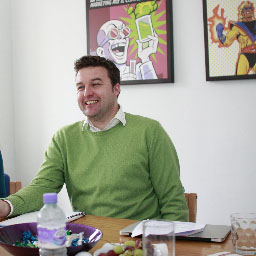 Broadcast coverage is undoubtedly the best way for your client to reach millions of viewers and listeners and gain widespread exposure. So, when these occasions present themselves, it’s vital to get things right.
Broadcast coverage is undoubtedly the best way for your client to reach millions of viewers and listeners and gain widespread exposure. So, when these occasions present themselves, it’s vital to get things right.
We’ve recently been working with BBC1 on a new series of ‘Bang Goes the Theory’ and last summer one of our clients met with Roger Harrabin, the BBC’s Environment Analyst reporting for Radio 4’s ‘PM’ show.
As with all media interviews, preparation is key. Body language, posture, tone and dress are also important things to consider and are covered by professional media training courses. Here, we’ve put together five important tips on how to improve your chances of securing broadcast coverage for your clients and ensuring things run smoothly on the day
1. Maintain the momentum
Maintaining the momentum of your clients’ PR and marketing campaign will deliver a better return on marketing investment. A sustained campaign will also help optimise their SEO, allowing greater Internet visibility. This shouldn’t be underestimated. Media researchers are frantically trawling the web for background information on companies that fit their director’s brief and contact details for industry spokespeople.
Publishing regular news releases, articles, case studies, blogs and social media significantly increases the chances of a researcher spotting your client. That regular flow of news that you think isn’t always generating widespread coverage may, in fact, be registering with broadcast media so that when the time comes, they’ll know exactly who to call.
2. Be realistic
Let’s face it, for your average client, broadcast opportunities can be few and far between and are notoriously difficult to secure. It takes time, patience and many days, weeks and even months of planning, along with careful and sustained communication to attract the attention of major broadcast outlets. But let’s not forget one small but vital component in all of this; if your client really doesn’t have a strong news story that is relevant, timely and topical – then forget it.
3. Scrub your schedule
So you’ve helped secure a broadcast opportunity. It might be a live radio interview or a pre-recorded TV show. Regardless of the opportunity, you need to ensure your client remains flexible. It’s advisable to reschedule any existing appointments they may have for that day. Moments like these are few and far between so be prepared to drop everything and allow your client to give it their absolute full attention. Brief radio interviews shouldn’t cause too much inconvenience. However, you could be in for a long day if pre-recorded TV filming is required.
4. A date with the director
Freelance film crew, researchers and presenters are often paid on a daily rate so broadcast budgets are carefully managed. You can guarantee that, with the help of a research team, TV directors will already have a clear idea of what shots are required and which locations they think will work best. Directors may also have pre-prepared scripts for presenters to read through (often for the first time) before they go on air. Suggest a sit down meeting with your client and the director and talk through their ideas. Have some interesting facts and figures to hand and suggest including them. You know your client’s business better than a TV or radio production team with limited research resources so don’t be afraid to suggest alternative recording locations that may be more suitable for broadcast events. This precious time also gives you and your spokesperson the chance to anticipate what questions they are likely to be asked.
5. Having three is key
Your client will only have a few minutes to get their message across so it’s worth spending some time working this out. Ask yourself what do you want the audience to take away from this interview or programme? When the microphone is on or the cameras are rolling, nerves can set in so make things easy and keep it simple. Stick to no more than three key messages that are easy to remember. Then, get your client to practice delivering them in a jargon-free, calm and self-assured manner.
Marcus Edgar is a consultant with PR and marketing consultancy Resonates.
PR Masterclass: The Intersection of PR and GEO
Join PRmoment for a Masterclass featuring 10 of the industry’s foremost experts. You will walk away with a clear, actionable strategy for adapting your content to an AI-first search environment.
Taking place on Wednesday 25th February in London, both virtual and in person tickets are available.
Early bird ticket sale ends Friday 9 January.
PR MasterclassIf you enjoyed this article, sign up for free to our twice weekly editorial alert.
We have six email alerts in total - covering ESG, internal comms, PR jobs and events. Enter your email address below to find out more:









